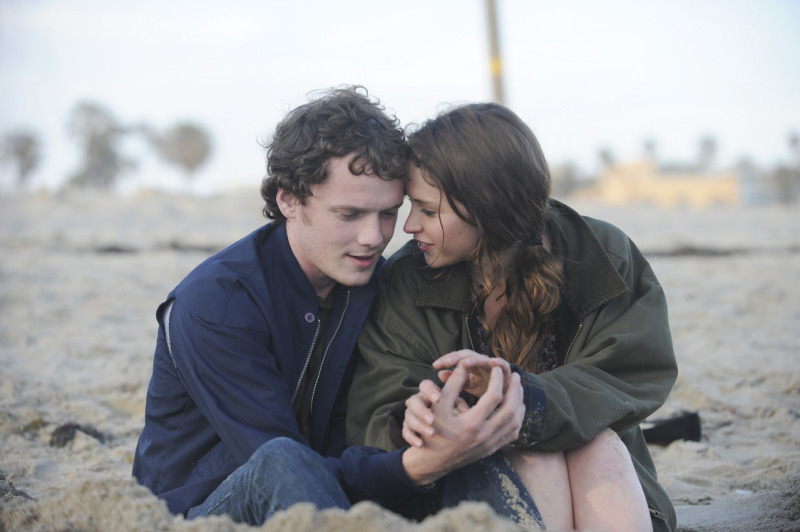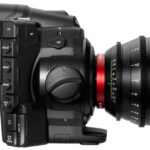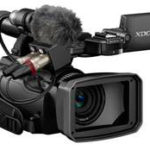
Case Study: Like Crazy – Shot on the Canon EOS 7D
Posted on Mar 29, 2012 by Alex Fice
‘Like Crazy’ was a one camera, the EOS 7D, true indie movie that won best drama at Sundance last yearIt seems that the death of the video DSLR might have been exaggerated. Canon and Nikon have introduced in the last month three new DSLRs with video abilities that might have answered many of the questions that professionals shooters have of them. The Canon 5D Mk3, the Nikon D800 and D4 all promised much faster read outs with brand new processing to battle moire and rolling shutter. Nikon ironically seems to be the manufacturer who is giving the pro shooter something really useful in their uncompressed video signal through the HDMI, an 8-bit signal at 4:2:2. This 1920×1080 signal comes from a medium format-like 36.3 megapixels sensor, how that is done is yet to be revealed but is it just extreme line skipping and pixel binning? Canon claim that they have eradicated moire issues with their DIGIC 5+ processor and Nikon have put on a very fast USB connection.
The stakes are high and the prices are creeping higher with the Canon coming in at £3,000. Where then does their concept 4K DSLR fit in between the new camera and the ‘old’ new camera, the C300?
But just to remind us that with care and skill you can make a movie with DSLRs. Not just make one but also win a best film award at a major film festival. Like Crazy won best drama at Sundance last year and went on to be picked up by Paramount Pictures in a $4m distribution deal.
DP John Guleserian told us how he shot Like Crazy on a minuscule budget without testing or a thought to a 35mm print. But in true successful indie film fashion he and the same director Drake Doremus have gone on to make another movie but this time with an Arri ALEXA in anamorphic but have taken plenty of lessons they learned with the Canon 7D.
“I had never shot anything on a DSLR. I started off in film and embraced anything digital as it came up. I shot on the Sony f900 when it first came out, I shot on the RED when it first came out. Embracing anything new is important if you’re a DP. Drake (Doremus) and I had made a movie before and were planning to shoot Like Crazy on the RED One at the time. He had this 50 page outline that he was working from as he wanted it to be a completely improv’d movie. He had made a movie previously which I wasn’t involved in called Douchebag which was shot on a Panasonic HVX200 and was a really ‘run and gun’ type movie. He really liked the performances he had gotten out of that so we started talking about how can we do something where you get those performances that you liked but that you also accomplish something that was a bit more cinematic.
“The RED seemed a little bit cumbersome for how he wanted to shoot, and then we started playing around with the idea of the 7D and what we could get out of that. Although it has a lot of technical drawbacks to it we decided to embrace that and do the whole thing with it. Originally we planned for it to be a ‘B’ camera so if we had a couple of moments we could run off and shoot something with actors. But we liked it so much and how liberating it was that we decided to shoot the whole movie like that. Because of that we ended up learning a lot from it and learning what was possible as story tellers.
“It’s limitations were well known, its a camera that’s not design to do what we’re doing with it. We tried to put ourselves ahead of the curve as much as possible by using the prototype of the PL mount version from Hot Rod cameras so we could use real cinema lenses and give the focus puller a chance. That’s the reason we chose the 7D over the 5D as well. We knew we would be running around and doing things quickly with actors moving around in spaces without marks and things like that. A 5D with still lenses would have put us in a position where we wouldn’t have accomplished what we needed to. The PL mounted 7D used Arri/Zeiss Ultra Primes, so in that sense it becomes more like a real camera, something that we are at least used to.
We had a small budget and weren’t even watching dailies properly. I would take a hard drive home and Drake would take a hard drive home and we would both watch dailies and sometimes talk on the phone. But we were watching them on computer screens which is pretty scary as we didn’t really know what we were getting. We were shooting something with H.264 compression that eventually we wanted to be seen on a big screen and we didn’t have the money or time to do tests so it was a big risk for us. At the time I couldn’t find anybody who had done a full movie on a DSLR and gone to a 35mm print.
I don’t think we used a wider lens than a 32mm on the whole movie. The compression just doesn’t hold up very well on the wider shots. We shot a lot of our Masters with longer lenses through doorways really far away from our characters and then really tight close ups which really worked for our techology but really added to the tone of the movie, something we’ve taken on to the new film”.
A British film, shot almost entirely on Canon DSLRs, has shone at the 37th Boston Science Fiction Film Festival. Dimensions: A Line, A Loop, A Tangle of Threads, filmed by DoP Simon Dennis (The Sweeney) and edited by our own Adam Garstone was honoured with the Gort Award for Best Film 2012. The Gort must be one of the coolest looking film awards ever – Wired Magazine covered its design in 2010 (http://www.wired.com/underwire/2010/03/gort-awards/). Previous winners have included Duncan Jones’ Moon (Audience Award).
Director Sloane U’Ren and husband Ant Neely (who wrote and scored the film) sold their house in London to finance the production, so the camera package had to be cost effective. The production bought Canon 5D MkII bodies, and Pro Motion Hire provided a set of Zeiss Distagons with appropriate adapters.
Dimensions had a standing-room only screening as the closing film of the festival, and then played again as part of The ‘Thon’ – a 24 hour movie marathon.
Previously, the film screened as part of the Cambridge Film Festival (U.K.) and outsold, per screen, the U.K. premieres of Tinker Tailor Solider Spy, The Help and Midnight in Paris.








